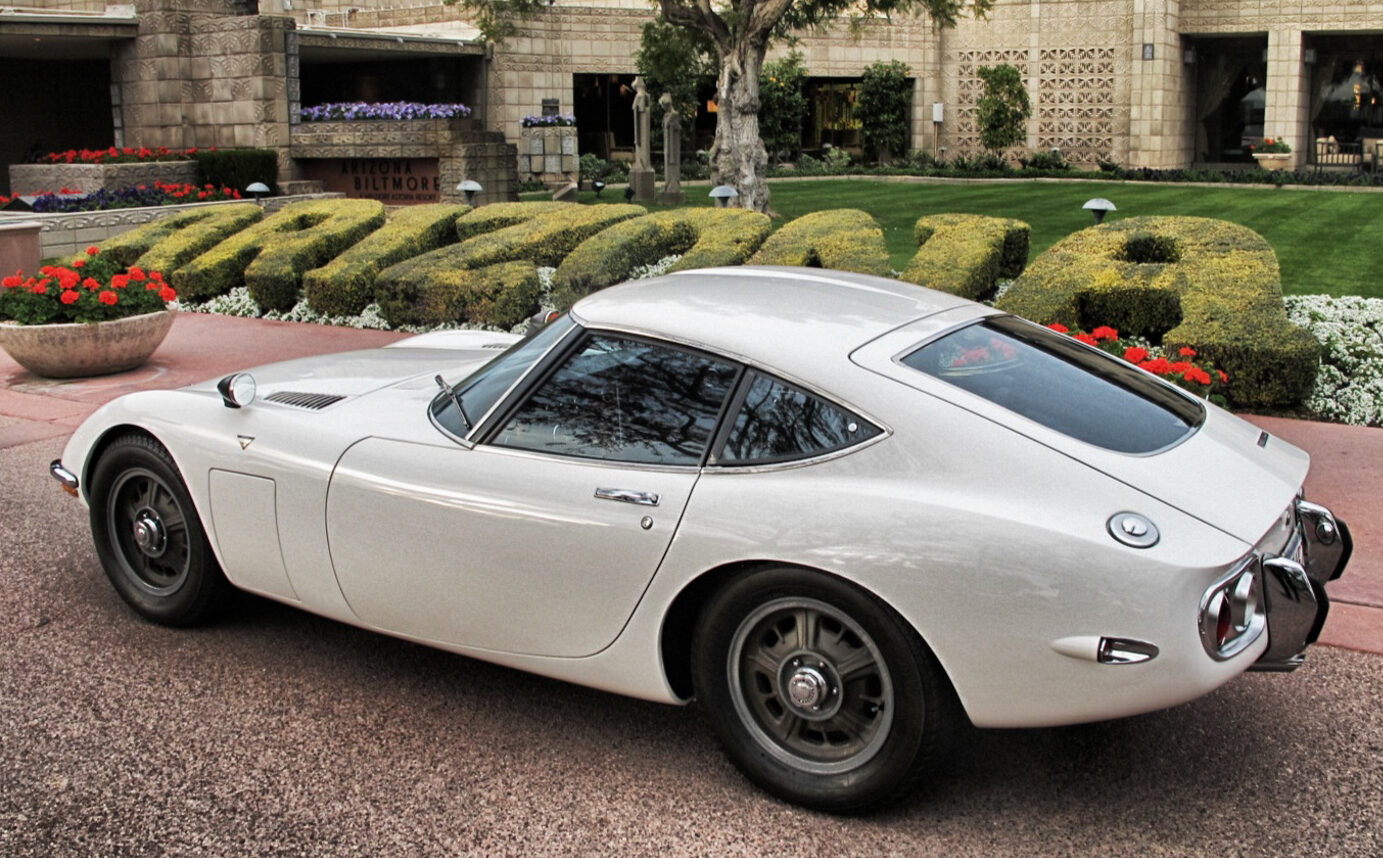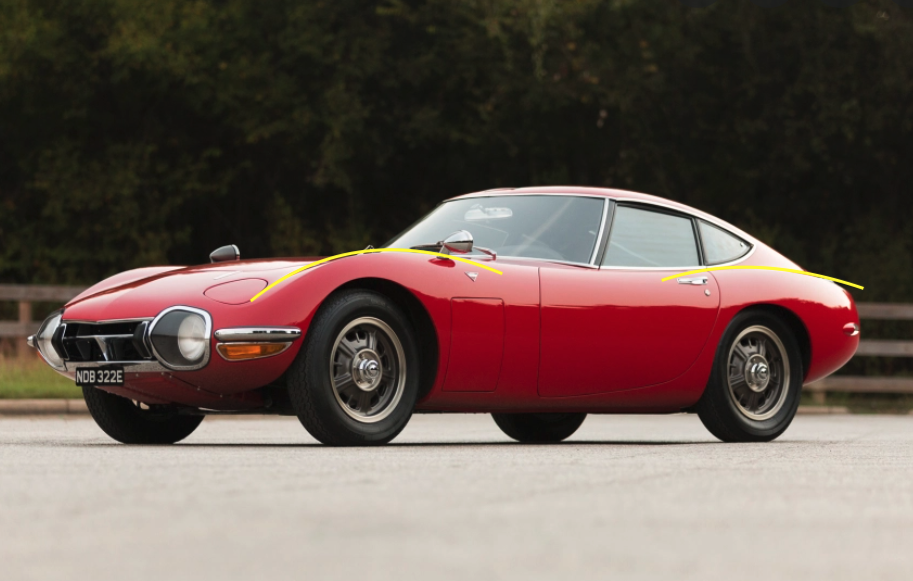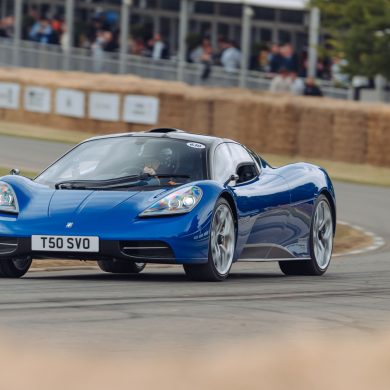If you had to pick the ten most beautifully designed sports cars, chances are most of the list would contain cars from Europe. Primarily Italy. This comes as no surprise to many of us who are car enthusiasts. Italy does everything with passion, artistry, and a perfect blend of balance and vitality to their designs. Especially their cars. But there is a non-European sports car that stands today as one of the most engaging and beautifully constructed examples of the Golden Age of Motorsports and Performance cars – the Toyota 2000GT.
With just 337 examples sold over a three-year production period (1967-1970), the Toyota 2000GT not only changed world opinion about Japanese automobile manufacturing, it changed perceptions about the stoic, non-emotive Japanese industries that built what was then largely economical small cars. Often ridiculed for their low quality and poor performance, the Japanese auto industry was essentially starting from scratch after the end of WWII. In less than 20 years, Toyota would establish themselves as capable volume manufacturers with the ability to produce significant cars, not just for their growing domestic markets but for world markets.
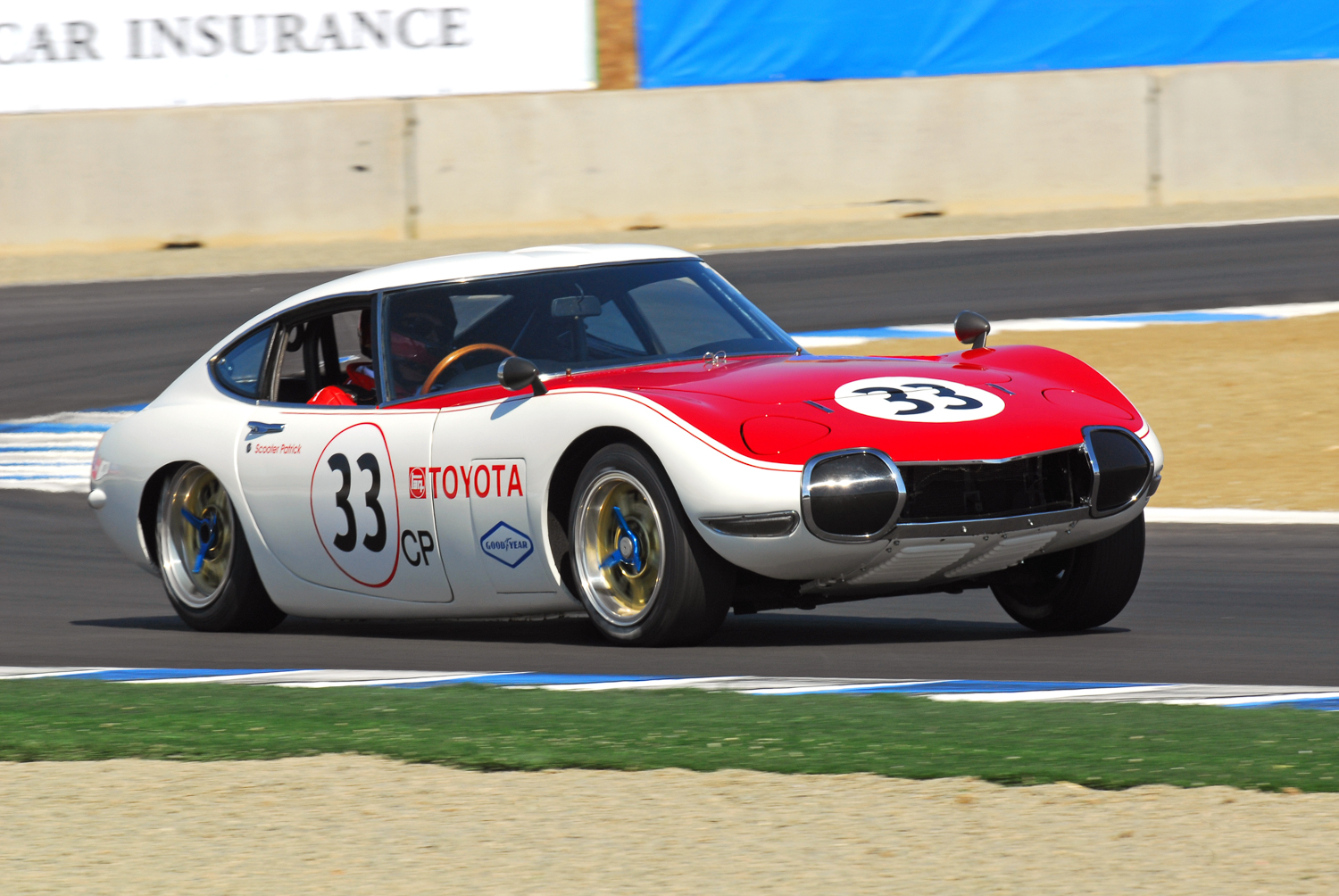
Lacking performance history and engineering capabilities in sports car drivetrain development, Toyota engaged Yamaha, known for their performance engines and racing experience. This contract work would prove to be critical in the development of the 2000GT, but Toyota cleverly installed their own designer, Satoru Nozaki, an Industrial Designer who was very well-versed in car design. Nozaki cribbed heavily from the then enormously popular Jaguar XKE but only in overall theme and basic character. Working from the Yamaha developed semi-monocoque platform, backbone chassis, and steel body, Nozaki developed a unique visual signature for this important car. Using an in-line, twin-cam, six-cylinder engine delivered more than enough power for the roughly 2,500-lb sports car. Yamaha employed the latest in suspension technology including independent front and rear suspension, close ratio steering, and state of the art disc brakes at all four corners.

Arriving in 1965, at the Tokyo Motor Show, unsuspecting crowds were witnessing a major shift in the automotive world – Japan had arrived on the performance grid with both style and power. Toyota had not only launched a world-class sports car capable of meeting or exceeding the very best performance cars on the market, they did so in record time – less than a year since project inception. Priced at the top of the market, exceeding the cost of the new 911 and Jaguar XKE, production orders were slow but steady. Knowing the 2000GT was a “halo” car Toyota was not deterred. The 2000GT had given notice to the world that Japan was a serious contender in the sports car market, worthy of appearance in the James Bond movie “You Only Live Twice” featuring the only convertible built on the 2000GT platform. Although Toyota would cease production of the 2000GT in 1970, it would lead the way for Japan’s technical prowess with production performance cars arriving in full force to North America with the introduction of the Datsun 240Z.
Few sports cars achieve the exceptional level of balance, proportion, stance, and thematic clarity exhibited in the Toyota 2000GT. It stands, without compromise, in the company of design icons including the Jaguar XKE, Lamborghini Miura, 289 Cobra, and the Porsche 911. All these cars feature balance and proportional excellence. Yet each car is visually unique in their profile and presence. Even though designer Nozaki envisioned the XKE as the ultimate expression of the modern sports car, the 2000GT contains unique visual signatures that separate it from all other designs. While many details can be attributed to features found on other cars, the 2000GT carries a very distinct profile that immediately captures your attention. The frontal cross section is low and dramatic, flanked by large, covered driving lights at each corner and featuring hidden headlights retracted into the extended hood line. The chrome corner bumpers lead the eye back from the front of the car to the softly curved body sides. The side panel access door, yet another unique visual feature of the 2000GT, is followed by long passenger doors that pull the eye into the front fender line, which reduces the rather long space from cowl to front axle, required to house the in-line six-cylinder engine, placed far back in the cowl, for better weight distribution.
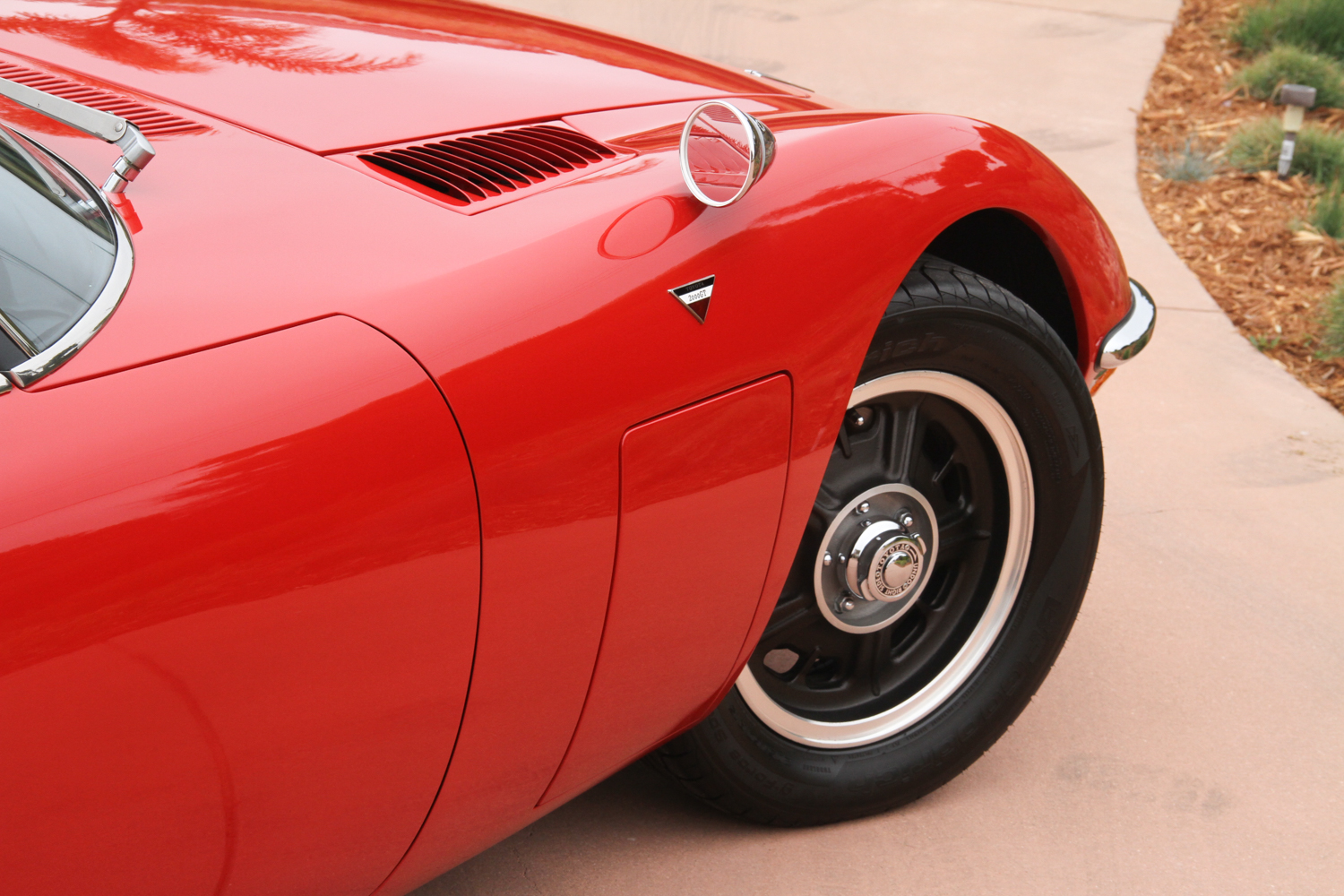
Standing beside the car, the low roof and belt line are surprising, as much of the cars visual mass is under the side glass, a feature one also finds in the Miura and Ford GT40. The profile is so perfectly balanced by the tapered roof trailing back to form the rear glass and tall rear end that the undulating “ribboned” belt line stands in stark contrast to the sharply pointed termination of the rear quarter glass. The juxtaposition of Samurai-sliced precision and sensual curvature are at the core of the Japanese heritage cleverly imbued in the body design.

Among the more dramatic features of the body design, the undulating front and rear fenders are excellent examples of how well the fenders rise into the body, creating dramatic crowns above the hood line at the front, and forming the muscular haunches at the rear.
The surface control from the aggressive forward arch to the rear softer line accentuates the power under the hood. Even the wheels, usually smaller on Japanese designs are a much larger percentage of the profile mass, giving the car a very muscular stance despite the short wheelbase and lithe visual architecture.
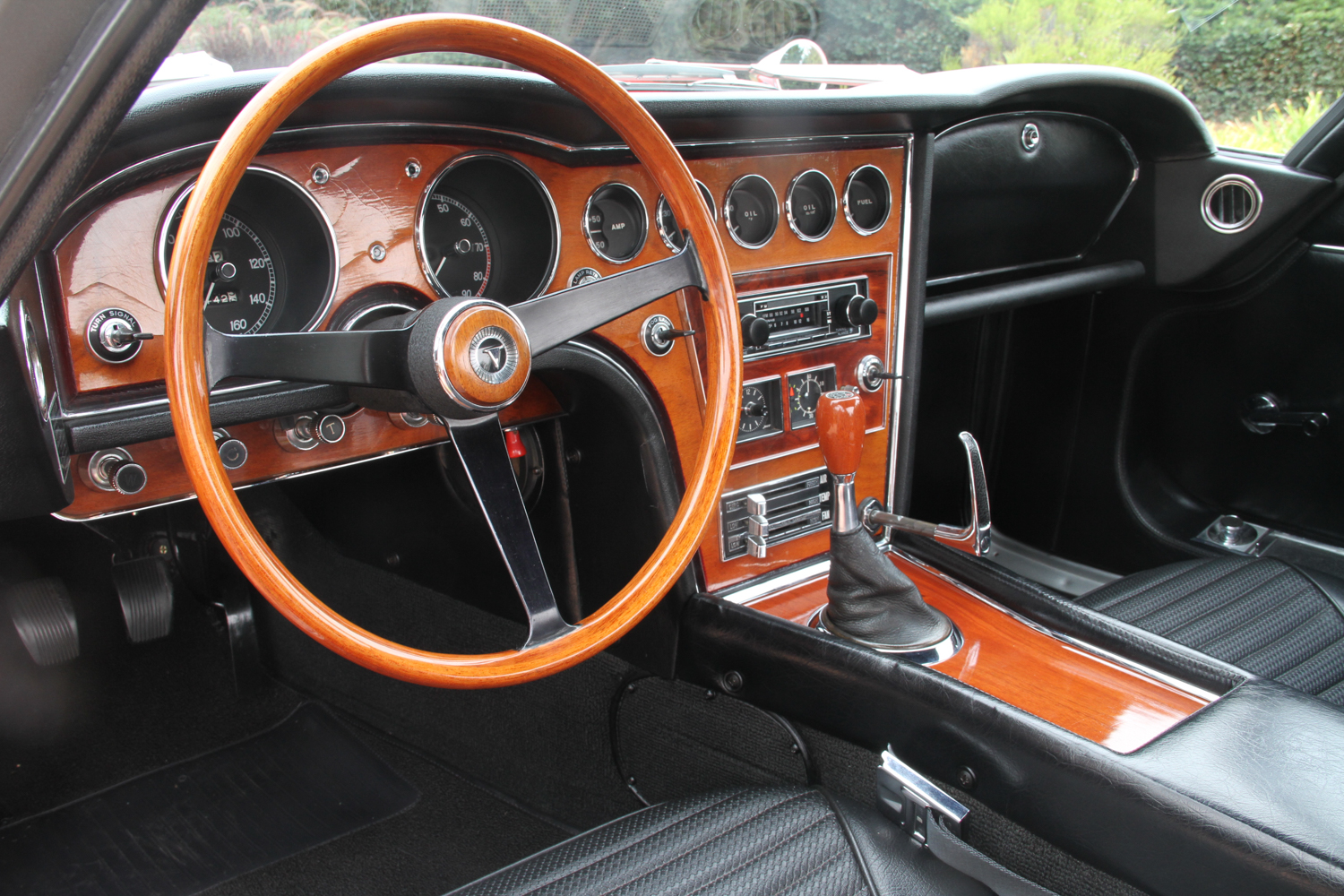
The interior of the car relies heavily on traditional sports car design themes with multiple instrumentation and bucket seating, but here too the seating position and panorama across the front of the car is sweeping and dramatic, much like the XKE but with distinct corner points in the crisp, bladed architecture.
The Toyota 2000GT has since become an iconic collector car vaulting into high six figures for top level cars. Rightly so, taking its position among the finest sports cars of the period, the 2000GT is and will always be the rising sun that brought Japan into the modern age of performance automobiles.



